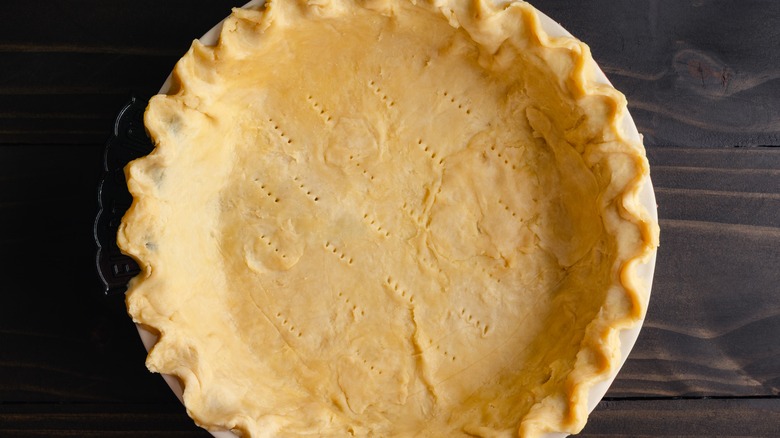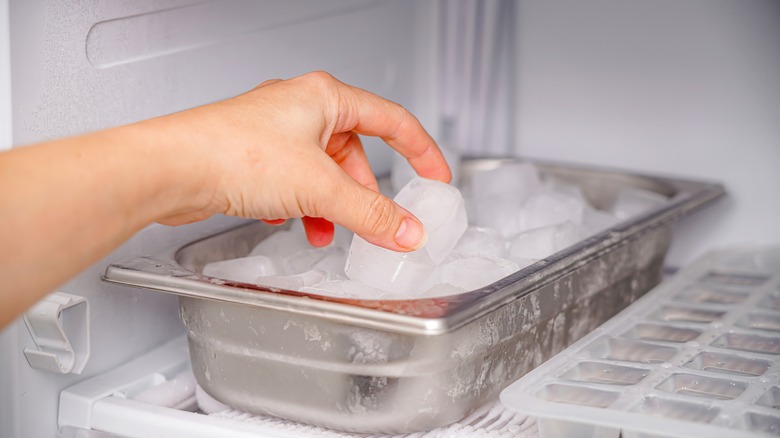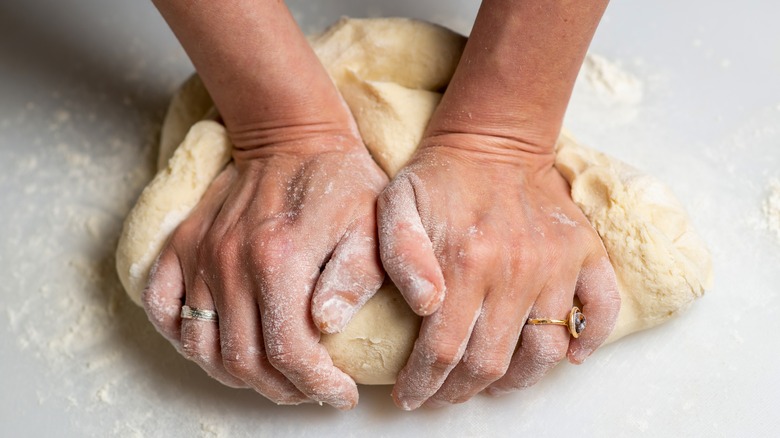Why You Should Ice Your Countertops Before Making Pie Crust
A sunny summer BBQ might sound like the perfect occasion to prepare a plump peach pie. That is, until you're tussling with a tangled, sticky, and uncooperative pie crust in a muggy kitchen. Even though the farmers market is bursting with ripe red berries and round stone fruit, the warmer months often don't provide the ideal conditions for crafting up flaky, flavorful tarts. The power of a pie lies in the perfect crust, and there's nothing more frustrating than struggling to weave a neat lattice in 80 degree heat. Luckily for you (and the attendees of your next cookout), there is one super simple solution that is about to make your kitchen a little more conducive to forming an effortless pie crust.
If you've ever grabbed a bag of frozen peas to ice an ache, you might already know your freezer holds the solution to a lot of your daily pain points. Baking is no different. The key to making a pie crust in the summer is to begin with a little ice. Icing your countertops helps the dough stay cool and keeps it from sticking.
Cool off the counter
If you've got your mind on pie, there's no need to wait for the holiday buffet for the perfect slice. Whether you're partial to the sweet, gooey filling or the rich, buttery crust, there's nothing like a slice of pie outside on a summery day. If you're panicking over preparing your pie in a sweltering space, just chill! Pastry chef Stella Parks recently displayed a cool hack for hot kitchens, and you probably already have all the elements at home. To keep your workspace cold and to avoid a crust catastrophe, try Parks' pie hack asap. Simply fill a large zip-top bag with ice cubes and a little water, and rest it on your kitchen counter before rolling out your dough. Now that you've properly prepared your space, you're ready to put the sweet versus savory pie debate to rest and put your perfect crust recipe to the test.
Perfect your pie crust
Preparing the perfect pie crust is a fickle venture. You've tackled the counter temperature, but there are a few other ways to fool-proof your pie. Plenty of near-perfect pies have fallen victim to a flavorless base, but your go-to chip dip might just be the secret to beating a lackluster lattice. Sour cream, which regularly makes a guest appearance in cakes and breads, is ideal for enhancing your pie crust. Swapping water for sour cream will help keep the dough soft, flavorful, and easier to work with, meaning you can adorn your apple pie with intricate designs and cutouts without your dough drying out.
Also, to keep your crust flaky, don't let the raw dough reach room temperature sitting out on your counter. Pop it in the refrigerator for about 30 minutes before sticking it in the oven so the butter remains cold. Here's hoping the rest of your summer baking is easy as pie!


